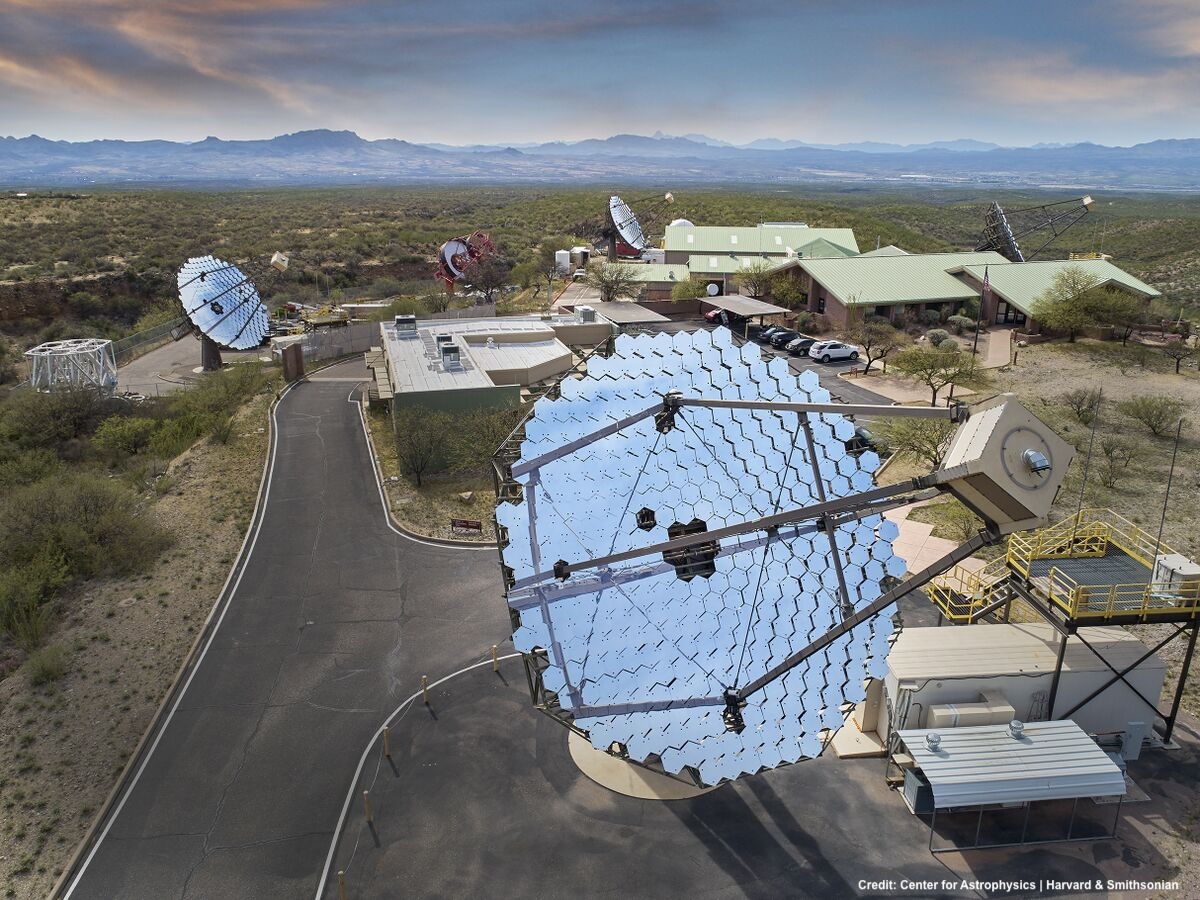Research
VERITAS
The Very Energetic Radiation Imaging Telescope Array System or VERITAS is an array of four 12 m diameter imaging atmosphere Cherenkov telescopes. The picture shows the four telescopes at their permanent location at the Fred Lawrence Whipple Observatory observatory one hour south of Tucson, AZ.
I am working on using VERITAS observations to search for and studying potential very-high-energy gamma-ray sources that are counterparts to high-energy neutrinos detected by the IceCube observatory. I am interested in studying the multi-wavelength properties of active galactic nuclei (AGNs), e.g., the first potential high-energy astrophysical neutrino source: TXS 0506+056 and the first black hole to be imaged: M87.

CTA and SCT
The Cherenkov Telescope Array Observatory (CTAO) is the next generation ground-based observatory for gamma-ray astronomy at very-high energies. With more than 100 telescopes located in the northern and southern hemispheres, CTAO will be the world’s largest and most sensitive high-energy gamma-ray observatory.
The U.S. members of the CTAO collaboration have pioneered the development of an innovative Schwarzschild-Couder telescope (SCT) based on the dual-mirror optical system first proposed by Karl Schwarzschild in 1905. The prototype of the SCT, now built at the Fred Lawrence Whipple Observatory adjacent to the VERITAS telescopes, will serve as a pathfinder medium-sized telescope (MST) for CTAO. The MST array of SCTs in CTAO is expected to significantly improve the angular resolution and dramatically improve the off-axis sensitivity of the observatory when compared to an MST array of conventional (VERITAS-like) Davies-Cotton Telescopes (DCTs).
I am working on the development of control and monitoring software for the prototype SCT.
Check this vedio to learn more about CTAO science.